Water, the most essential resource for life on Earth, weaves itself into countless aspects of our daily lives, encompassing human survival, agriculture, industry, and environmental preservation. With growing global concerns such as climate change, pollution, and resource depletion, it has become increasingly vital to explore various aspects of water and its use, conservation, and governance. In this inquiry, we delve into subjects like the water cycle, water conservation, pollution, treatment, waterborne diseases, groundwater management, agricultural water usage, water resources management, climate change impacts, and the role of shared water resources in regional and international relations.
Water Cycle
The water cycle, also known as the hydrologic cycle, is the continuous process of water circulation between the Earth’s surface, the atmosphere, and underground. One crucial element of this cycle is evaporation, which occurs when water from the Earth’s surface (including oceans, rivers, and lakes) is heated by solar radiation and rises into the atmosphere as vapor.
As the vapor rises, it cools and forms clouds through the process of condensation. This process not only contributes to cloud formation but also plays a significant role in regulating the Earth’s temperature.
Another aspect of the water cycle is precipitation, which occurs when water droplets in clouds collide, eventually becoming heavy enough to overcome atmospheric resistance and falling to the ground as rain, snow, sleet, or hail. The amount and type of precipitation depend on various factors, including temperature, humidity, and wind patterns. Precipitation plays a critical role in replenishing fresh water sources, such as rivers, lakes, and groundwater.
Transpiration is another essential factor in the water cycle. It is the process by which plants release water vapor back into the atmosphere through their leaves. This process is vital for plant survival, as it helps in absorbing nutrients from the soil, growth, and maintaining temperature. Transpiration works in tandem with evaporation to further contribute to the moisture content available in the atmosphere for condensation and cloud formation.
In addition to evaporation, condensation, precipitation, and transpiration, there are other processes involved in the water cycle. One such process is infiltration, where water that falls as precipitation penetrates the Earth’s surface and becomes part of the groundwater supply. Groundwater eventually makes its way back to rivers, lakes, and oceans, where the process of evaporation begins again. Another process is runoff, where water that does not infiltrate the ground flows over the Earth’s surface and into water bodies.
Understanding the water cycle is crucial for comprehending the availability, distribution, and movement of water resources on Earth. This knowledge is essential for water management, including flood and drought prediction, water supply planning, and environmental conservation. The water cycle is a complex system, and changes in any of its components can have repercussions on the entire process. It is essential to continue researching and monitoring the water cycle to ensure that water, an invaluable resource for the survival of all living organisms, is protected and conserved for future generations.
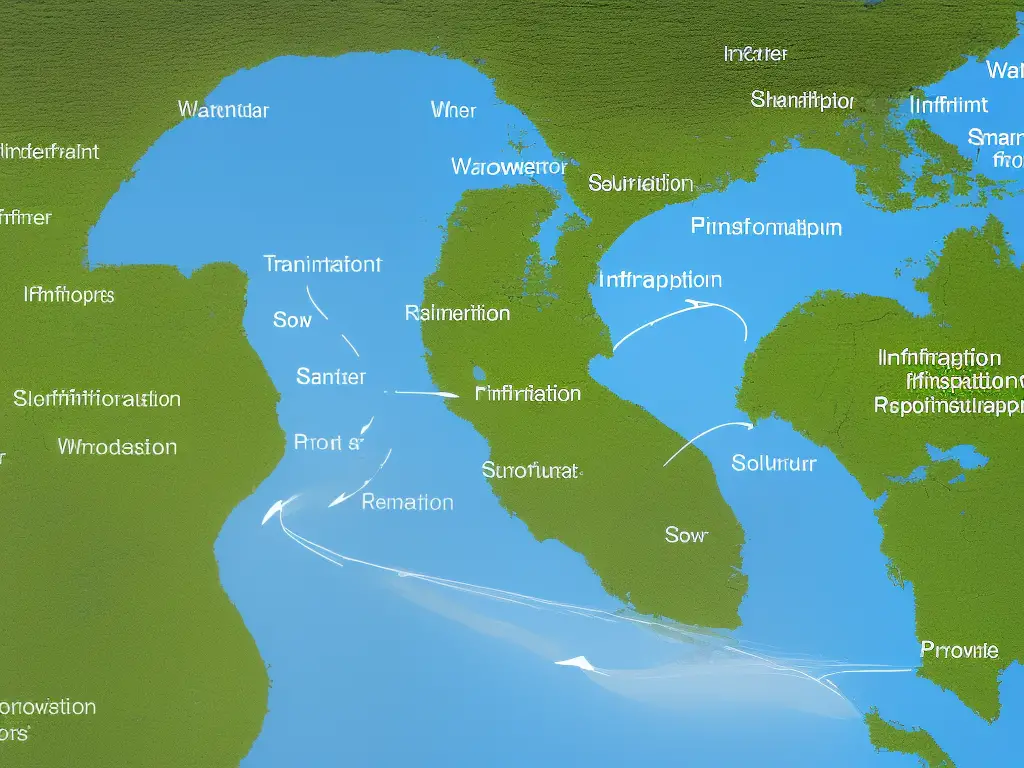
Water Conservation
One significant aspect of water management that stems from understanding the water cycle is water conservation. Water conservation plays a critical role in mitigating water scarcity, promoting the sustainable use of water resources, and preserving ecosystems. A growing global population and increased demand for water resources have put immense pressure on water supply systems. Water scarcity has been an increasing concern that affects not only human welfare but also ecological balance and agricultural productivity. Developing effective water conservation strategies can be highly advantageous, as it not only helps reduce water consumption but also minimizes the stress on water infrastructure, aids in protecting our environment, and improves water quality.
Conserving water at the personal level can lead to a significant impact on water resources. People can adopt various measures to reduce water waste in their daily routines, such as turning off faucets while brushing, fixing leaks promptly, installing water-saving appliances, and employing low-water landscaping techniques. These actions not only lower an individual’s water consumption but also result in reduced utility bills, demonstrating tangible financial benefits of water conservation. Additionally, public education and awareness campaigns can encourage more people to adopt water conservation practices, thereby creating a larger collective impact on preserving water resources.
Local governments and communities can also contribute to water conservation efforts through effective policy implementation, infrastructure improvements, and community engagement campaigns. By enforcing building codes that require water-saving fixtures and appliances, incentivizing the use of water-efficient landscape designs, and investing in rainwater harvesting systems, local governments can effectively manage water consumption in their jurisdictions. Furthermore, engaging community members in the importance of water conservation and encouraging participation in local water-saving initiatives can create a sense of shared responsibility that leads to collective action.
At the global level, international organizations, governments, and NGOs can work together to identify areas with high water stress and develop sustainable interventions for water resource management. These might include investing in water infrastructure upgrades, promoting wastewater treatment and reuse technologies, and supporting efficient irrigation practices for agriculture. By collaborating on these initiatives and sharing best practices, countries can jointly address water scarcity challenges and contribute to improved water security worldwide.
Technological advancements play a significant role in enhancing water conservation efforts, which can help mitigate the impacts of water pollution on both human and environmental health. Innovations such as smart water meters, leak-detection sensors, and efficient irrigation systems assist in identifying and reducing water waste. Additionally, research into water-saving agricultural practices, water-efficient industrial processes, and desalination technologies can advance global efforts to reduce water consumption and dependency on limited freshwater resources. Fostering a culture of innovation and collaboration among scientists, policymakers, and stakeholders can lead to the development of effective solutions that transform water conservation and resource management practices.
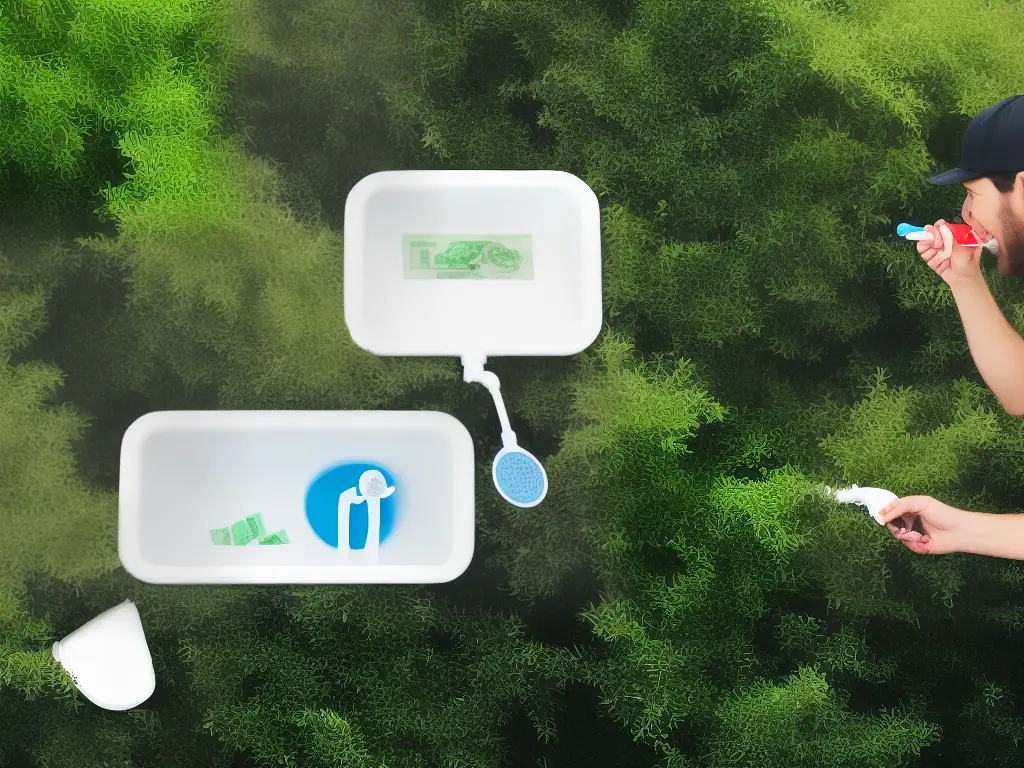
Water Pollution
It is important to understand the causes of water pollution, as various factors contribute to the degradation of water quality, affecting both human and environmental health. These causes can be broadly classified into point sources, where the pollutant is released directly into the water body, and nonpoint sources, where pollutants are carried by runoff or introduced indirectly. By implementing the innovative technology and practices discussed in the previous paragraph, effective preventive measures can be developed to address water pollution and mitigate its negative impacts on ecosystems and human health. This holistic approach to water conservation and pollution management can lead to more sustainable use of our precious water resources.
Natural processes can contribute to water pollution through events such as floods, volcanic eruptions, and earthquakes, which can introduce pollutants like sediment, chemicals, and organic matter into water bodies. However, human activities are largely responsible for the increase in water pollution worldwide. Activities such as industrialization, urbanization, and agriculture introduce various pollutants into our water systems. For instance, industrial waste containing heavy metals and toxic chemicals are often discharged into waterways, affecting the water quality. Pesticides and fertilizers used in agricultural practices can leach into groundwater or be washed into rivers and lakes by rainwater, causing contamination.
The consequences of water pollution are profound and far-reaching. One of the most visible impacts is damage to aquatic ecosystems. Pollutants can disrupt the balance of aquatic life by depleting oxygen levels, altering water chemistry, and causing changes in temperature or habitat. This can lead to a decline in biodiversity, the disappearance of sensitive species, and the proliferation of harmful organisms, such as toxic algae. Additionally, water pollution can harm terrestrial and marine ecosystems, as many pollutants can travel through waterways and into larger bodies of water, like oceans.
Water pollution also poses significant risks to human health, both directly and indirectly. When people consume contaminated water, they can be exposed to harmful chemicals, heavy metals, and disease-causing microorganisms. This can lead to an increased risk of various illnesses, such as gastrointestinal disorders, skin conditions, and neurological damage. Furthermore, water pollution can have indirect health consequences, as it can contaminate food sources, like fish and crops, which people rely on for sustenance.
Mitigating water pollution requires a multi-faceted approach, focusing on prevention and remediation strategies. Key prevention measures include stricter regulations on industrial and agricultural practices, proper waste disposal, and effective stormwater management systems. Additionally, education and awareness programs can encourage responsible behavior and greater stewardship of water resources. Remediation efforts can involve physical, chemical, or biological treatments to remove pollutants from contaminated water bodies. One such remediation method is water treatment, which aims to clean and purify water for safe human consumption and use.
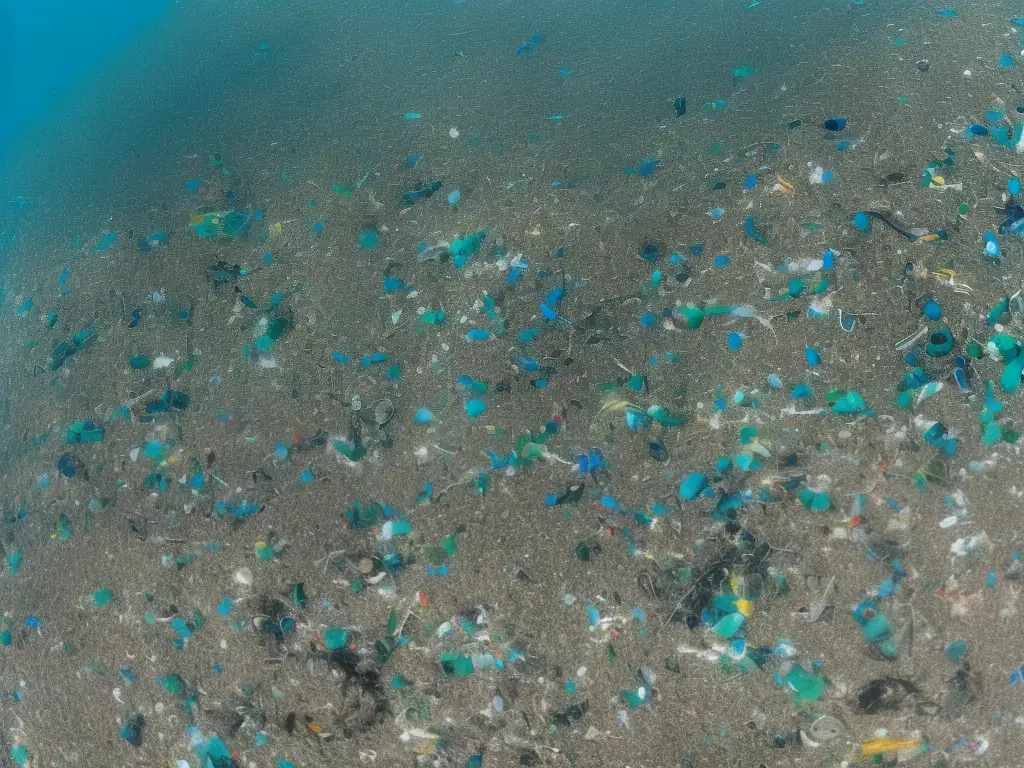
Water Treatment
Water treatment processes, such as filtration, can provide cost-effective and environmentally friendly solutions for water purification. Filtration involves passing water through a substance, such as sand or fabric, to remove large particles, sediment, and debris. This method can effectively reduce turbidity in water and remove suspended solids; however, it may not remove chemical contaminants, viruses, or bacteria. As a result, it is important to combine various prevention and remediation techniques to ensure the long-term health of our water systems and the communities that depend on them.
Another critical process in water treatment is coagulation, which is the process of using chemicals to bind and remove impurities in water. During coagulation, water is treated with a coagulant, such as alum, which reacts with the impurities to form larger particles called flocs. These flocs are heavier and can be filtered or settled out, leaving behind cleaner water. Flocculation follows coagulation, where the flocs are gently agitated, allowing them to join together to form larger, more easily removable particles.
Disinfection is another essential step in water treatment that focuses on eliminating biological contaminants and reducing the risk of waterborne diseases. There are a variety of methods for disinfecting water, with the most common being chlorination. Chlorine is added as a disinfectant because it is highly effective in killing microorganisms, such as bacteria, viruses, and protozoa. Other methods include the use of ozone, ultraviolet (UV) light, and chloramines. Disinfection ensures that water is not only clean but also safe for human consumption.
One treatment method that is gaining popularity due to its effectiveness in removing a wide range of contaminants is membrane filtration. Membrane filters are made of porous materials such as polymeric or ceramic materials, typically in the form of sheets or tubes, which can filter out particles, bacteria, and some viruses. There are different types of membrane processes, such as microfiltration, ultrafiltration, nanofiltration, and reverse osmosis, each with varying degrees of purification rates and removal of contaminants.
One essential element for our daily lives is clean water, which can be obtained through various purification processes. One advanced treatment technique for water purification is activated carbon filtration. Activated carbon is highly porous and has a large surface area that can adsorb organic compounds, chemical contaminants, and odor-causing compounds. This process is often used in conjunction with other water treatment methods to improve water taste, odor, and color. Activated carbon can be used in granular or powdered form and is typically made from materials like wood, coal, or coconut shells. By employing a combination of these treatment methods, water utilities can provide clean, safe, and aesthetically pleasing water for human consumption and use.
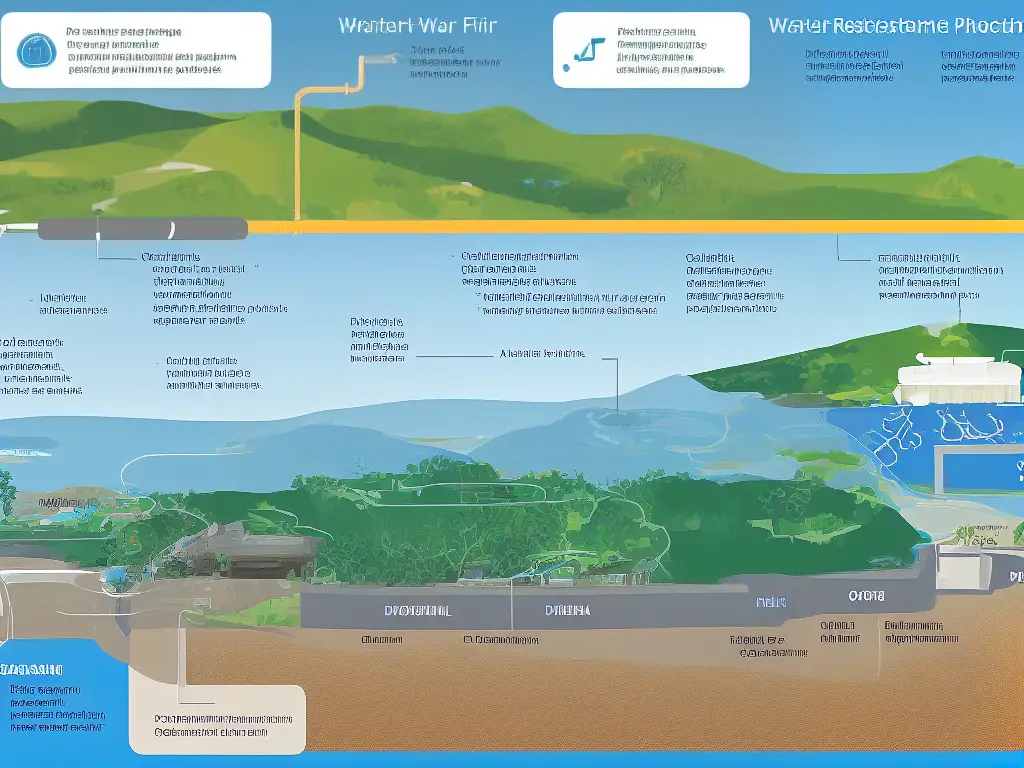
Waterborne Diseases
Ensuring the purity of water is essential considering the numerous health risks associated with consuming contaminated water. Waterborne diseases are illnesses caused by microorganisms such as bacteria, viruses, and parasites that are transmitted through contaminated water. These diseases primarily affect the digestive system and can lead to severe diarrhea, vomiting, and dehydration.
Some common waterborne diseases include cholera, dysentery, and typhoid, each of which results from the consumption of water or food contaminated with specific pathogens. Consequently, the implementation of advanced water treatment techniques like activated carbon filtration plays a crucial role in preventing such diseases and maintaining public health.
Cholera
Cholera is an acute diarrheal disease caused by the bacterium Vibrio cholerae. The disease is characterized by the rapid onset of severe, watery diarrhea, which can lead to severe dehydration and even death if left untreated. Cholera often occurs in areas with poor sanitation and limited access to clean water, such as during natural disasters and in overcrowded refugee camps.
Prevention of cholera involves ensuring access to safe water, proper sanitation, and hygiene practices. Vaccination against cholera is also available, providing short-term protection for high-risk populations.
Dysentery
Dysentery is another waterborne disease characterized by bloody diarrhea, abdominal pain, and fever. It is primarily caused by two types of pathogens: Shigella bacteria and Entamoeba histolytica parasites. The transmission of dysentery generally occurs through the fecal-oral route, where contaminated water or food is ingested. Drinking untreated water from wells, rivers, or ponds can increase the risk of ingesting these pathogens.
Dysentery can be effectively prevented by practicing proper hygiene, such as frequent handwashing, and by ensuring access to clean water and safe disposal of human waste.
Typhoid
Typhoid is a bacterial infection caused by Salmonella typhi, which is transmitted through contaminated water and food. The symptoms of typhoid include high fever, headache, constipation or diarrhea, and an enlargement of the liver and spleen. Complications from typhoid can be severe and may lead to intestinal hemorrhage or perforation, necessitating urgent medical care.
Vaccination against typhoid is recommended for travelers to endemic areas, but prevention mainly relies on the provision of safe water, food hygiene, and proper sanitation practices.
Water plays a crucial role in our lives and has significant impacts on public health, particularly when contaminated with fecal matter from infected individuals. Ensuring access to safe, clean water and adequate sanitation facilities is vital for reducing the transmission of potentially deadly waterborne diseases.
Public health intervention strategies such as water treatment, including disinfection with chlorine and filtration, distribution of water purification tablets, and promotion of proper hygiene practices can effectively prevent the spread of waterborne diseases. Additionally, continued research on the development of vaccines for these illnesses is vital to protect vulnerable populations and control outbreaks.

Groundwater and Aquifers
Water sources, such as groundwater, are essential components of the global water cycle, with groundwater constituting almost a third of the world’s total freshwater resources. It is stored in formations known as aquifers, which are porous rocks that transmit water to wells and springs. Ensuring the quality and sustainability of these groundwater resources is crucial to prevent contamination and maintain access to healthy drinking water, further emphasizing the importance of effective public health intervention strategies and responsible management of our water resources.
Recharge is the natural process by which groundwater is replenished, involving the percolation of precipitation, snowmelt, or surface water through soil down to the water table, which is the saturated zone in an aquifer where groundwater fills the spaces between soil particles and rock fractures.
Aquifers can be divided into confined and unconfined types, based on their geological characteristics. Confined aquifers are trapped between layers of non-porous rock and are under pressure, while unconfined aquifers have a water table that is exposed to the atmosphere and are replenished by precipitation and surface water infiltration.
The porosity and permeability of an aquifer are essential properties that determine its capacity to store and transmit water. Effective management, monitoring, and protection of groundwater and aquifers are critical in meeting the water supply needs of communities, ensuring water quality, and supporting ecosystems.
Groundwater is a crucial resource that can be vulnerable to contamination from human activities, making it vital to implement measures to prevent pollution. These measures include controlling land use in recharge areas, establishing protective buffer zones around wells and springs, regulating the discharge of pollutants, and maintaining proper well construction and maintenance.

Water in Agriculture
The importance of groundwater is particularly evident in the agricultural sector, which relies heavily on water for the growth and development of crops. Approximately 70% of the fresh water consumed globally is used for agriculture, emphasizing the need for proper management of water resources in this vital sector. As global food production depends on the availability of water, understanding its significance and management becomes even more critical as the world’s population continues to grow and the demand for water to sustain agriculture increases.
One way water is managed in agriculture is through irrigation, the process by which water is artificially and systematically applied to the soil, primarily for supporting crop growth. Although many crops rely on rainfall for their water supply, irrigation can be crucial in areas with insufficient or unreliable rainfall, as well as for certain crops that are more water-intensive. Various methods of irrigation are utilized, including surface irrigation, sprinkler irrigation, drip irrigation, and subsurface irrigation, all of which have their unique benefits and drawbacks. By employing the most suitable irrigation methods, farmers can optimize water use and minimize waste, ensuring the sustainability of water resources.
The relationship between water use and food production is a complex one, as it involves several factors such as crop type, climate, soil conditions, and farming practices. Many parts of the world face water scarcity or have experienced fluctuations in water availability due to climate change and other factors, necessitating the development of efficient water management strategies in agriculture. Implementing practices such as precision irrigation, drought-resistant crops, and improved soil management can contribute to an increase in water efficiency, ensuring that more food is produced per unit of water used.
Improved water efficiency in agriculture is essential not only for increasing food production but also for minimizing the environmental impact of farming activities. Over-extraction of groundwater for irrigation, soil salinization, and improper application of agrochemicals has resulted in the degradation of land and water resources, threatening the long-term viability of agriculture. Adopting environmentally sustainable practices in the agricultural sector can help mitigate these negative impacts, protecting the natural resources upon which agriculture depends.
One way to enhance water efficiency in agriculture and conserve valuable water resources is through the utilization of technology. Precision agriculture tools, such as satellite imagery and drone technology, enable farmers to monitor field conditions and make informed decisions about when and how much water to apply. This technology also assists in the early detection of potential problems, such as water shortages, allowing farmers to take appropriate actions to prevent crop loss. Additionally, investments in agricultural research and innovation can lead to the development of more sustainable and water-efficient farming practices, ultimately ensuring a more reliable and plentiful food supply for the growing global population.
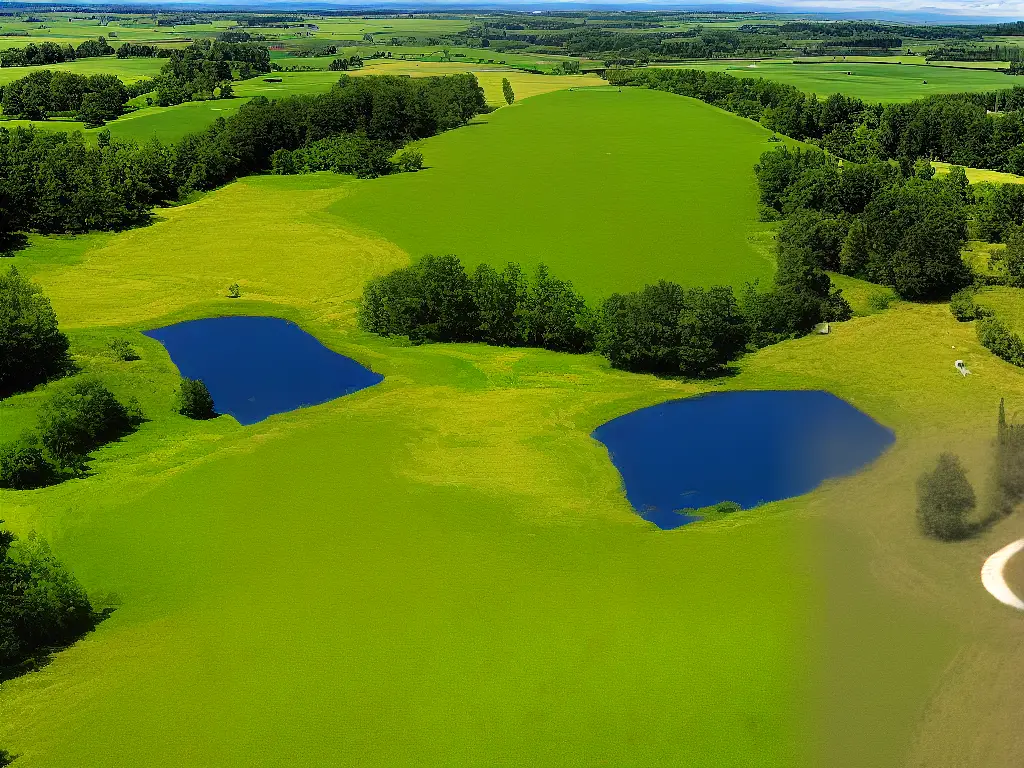
Water Resources Management
Effective water resources management involves planning, developing, distributing, and managing the optimum use of water resources to meet the diverse needs of various sectors, including agriculture. Striking a balance between the competing demands for water, such as drinking, agriculture, industry, and maintaining healthy aquatic ecosystems is a key aspect of this management process.
Understanding and addressing the challenges associated with balancing these competing demands is crucial as water scarcity continues to become a pressing global issue. Climate change and population growth further exacerbate this stress on freshwater supplies, making it essential to invest in innovative solutions for water management and conservation, such as those presented through precision agriculture technology.
In order to balance these competing demands for water, water resource managers must first gather accurate and comprehensive data on water usage, withdrawals, and availability. This information can be used to create sophisticated models and tools that predict future water usage patterns and assess potential impacts on water resources. It is important to consider factors such as population growth, economic development, and climate change when developing these models. Additionally, involving stakeholders such as communities, businesses, and government agencies in the decision-making process can promote more equitable and sustainable water allocation strategies.
One of the crucial aspects of water resources management is promoting water-use efficiency and conservation, particularly in the agricultural sector. Agriculture accounts for approximately 70% of global water withdrawals, and improving irrigation practices, crop selection, and water re-use can help reduce the strain on finite water resources. In industry, water resources management encourages businesses to adopt water-saving technologies and processes, thereby reducing their water consumption while maintaining their economic output. Moreover, addressing water loss through leakage and inefficient public water systems can help conserve water resources for human and ecosystem use.
Protecting and managing ecosystems is another vital aspect of water resources management. Rivers, lakes, wetlands, and other aquatic ecosystems provide essential services such as water purification, flood mitigation, and habitat for fish and wildlife. Water resource managers must assess the ecological flow requirements for these ecosystems and ensure that they receive the necessary amount of water to sustain healthy functioning. This requires cooperation and coordination between various regulatory bodies and stakeholders to implement policies and practices that protect these ecosystems while still meeting the water needs of human populations and industries.
Water resources management is a critical component in maintaining the long-term sustainability of freshwater resources and minimizing conflicts between competing water uses. Improving data collection and modeling, encouraging water-use efficiency, and protecting ecosystems are essential steps in achieving a sustainable, water-secure future for all. Ongoing research and technological advancements will likely enhance water management strategies and strengthen our ability to balance the various needs and demands on our planet’s precious water resources.
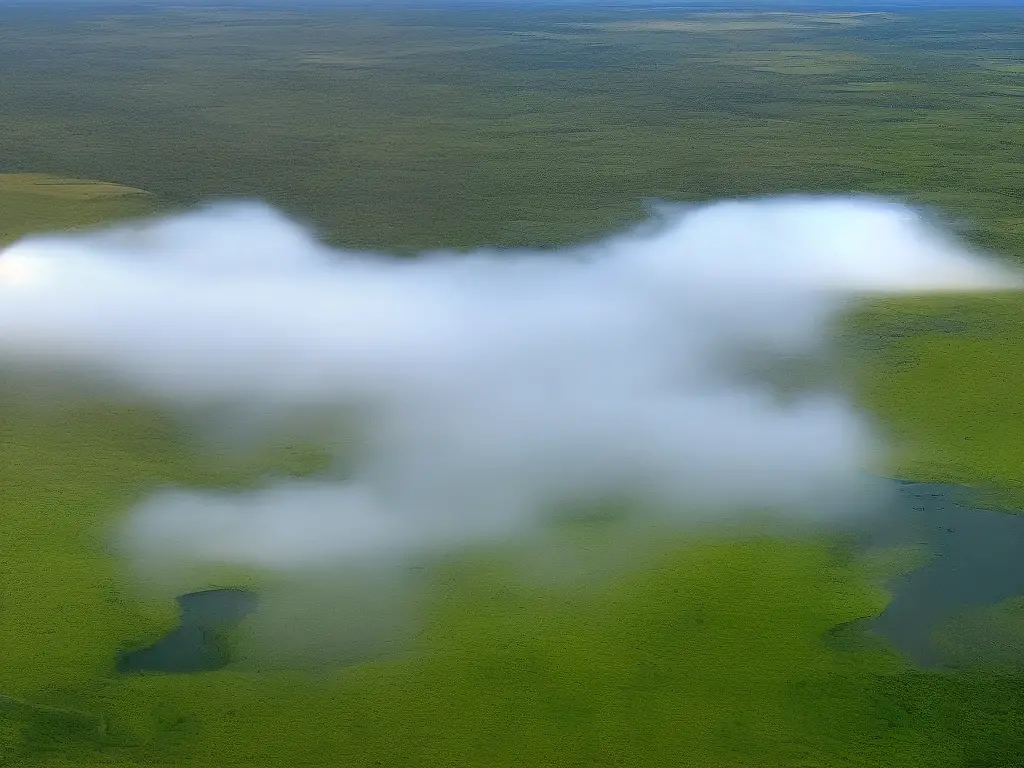
Water and Climate Change
It is important to note that water resources and climate change are intrinsically linked. Factors such as changes in temperature and precipitation patterns have profound implications for water resources globally. With global temperatures predicted to rise significantly in the coming decades, we can expect increases in evaporation rates, which may exacerbate water scarcity in some regions. Additionally, alterations in precipitation patterns due to climate change could further affect water availability and distribution. Therefore, successful water resources management should also take into consideration the current and future impacts of climate change.
One of the key ways that climate change affects water resources is through altering precipitation patterns. Warmer temperatures can lead to increased evaporation rates, which can result in a shift in the balance between precipitation and runoff. In some regions, climate change may lead to an increase in heavy precipitation events, which can lead to increased flood risks. Conversely, other regions may experience more prolonged dry periods, which can increase the risk of droughts. These changes in precipitation patterns can have substantial consequences for water resources, as they can result in a greater variability of water availability across different regions and seasons.
Another significant impact of climate change on water resources is the effect of rising temperatures on snowpack and glaciers. Melting glaciers and decreasing snowpack in mountainous regions have major implications for water supply, as they serve as natural reservoirs for many of the world’s major river systems. As these water sources diminish, it can lead to increased competition for water resources and elevated risks of water shortages, particularly in regions that rely on freshwater from glaciers and snowpack for irrigation, drinking water, and hydropower.
In order to mitigate the impacts of climate change on water resources, adaptation measures must be implemented at local, regional, and global scales. These strategies may include improving water management practices, investing in infrastructure that can accommodate changing precipitation patterns, and promoting water-efficient technologies. Additionally, efforts to reduce greenhouse gas emissions can help to minimize the ongoing effects of climate change on global water resources.
Global cooperation is essential in addressing water scarcity and climate change-related challenges, as they increasingly transcend political borders. Collaborative efforts, such as international agreements on climate change and water resource management, promote the sharing of knowledge, technologies, and strategies. This collaboration facilitates the development of more resilient water systems, ultimately benefiting communities around the world that rely on clean and accessible water to maintain their livelihoods and well-being.
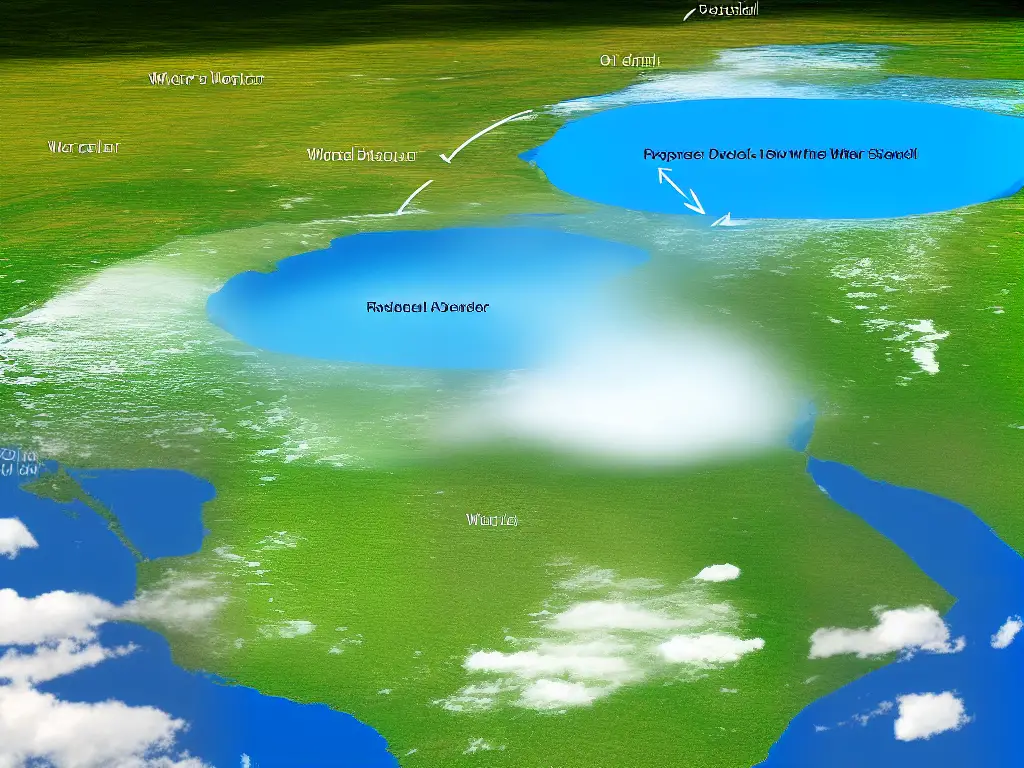
Water Conflicts and Cooperation
Water resources, being essential for supporting life, agriculture, and economic growth, are subject to uneven distribution and increasing demand, which can lead to conflicts and cooperation between communities, regions, and countries. Allocation and management practices are often disputed due to competition between stakeholders, such as farmers, industries, urban dwellers, and transboundary riparian states. A cohesive global approach to water resource management can help alleviate these conflicts, ensuring a more sustainable future for all.
Governance plays a significant role in managing water resources to either exacerbate or mitigate conflicts. When countries adopt cooperative and collaborative governance approaches, sustainable and equitable water management can be achieved, through mechanisms such as international river basin organizations that foster cooperation among riparian countries like the Mekong River Commission. In many cases, water scarcity acts as a catalyst for diplomacy and cooperation between countries, as seen in the Grand Ethiopian Renaissance Dam agreement between Ethiopia, Egypt, and Sudan, and the Indus Waters Treaty between India and Pakistan since 1960.
However, challenges in managing shared water resources persist, and climate change is likely to exacerbate tensions in water-stressed regions such as the Middle East and North Africa, or regions with growing populations and demand. To ensure sustainable and equitable water management, it is crucial to develop robust and flexible governance mechanisms at local, regional, and global levels. Collaborative institutions, such as river basin organizations, need empowering to address emerging water-related challenges. The international community must support capacity building by developing practical tools like early warning systems and integrated water resources management frameworks. Cooperation among stakeholders is essential in ensuring the availability and sustainable management of water for all.
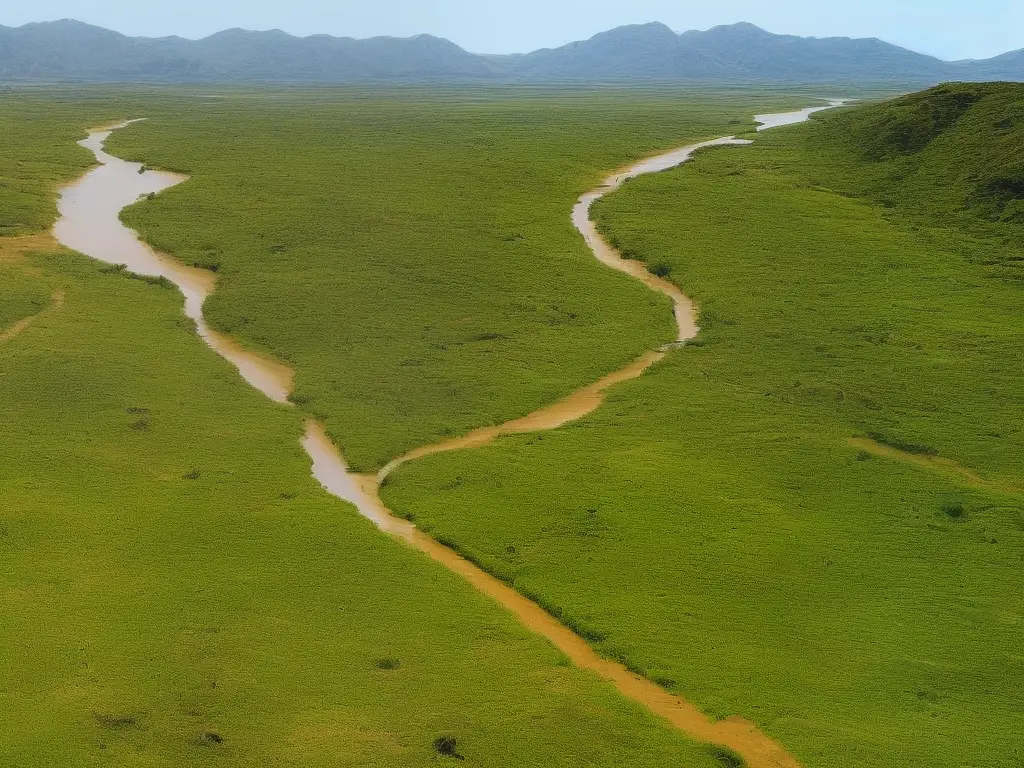
As we have explored the multifaceted nature of water and its implications on our lives, it is evident that understanding of these topics lays the foundation for responsible water usage and management. The interconnectedness of these subjects highlights the importance of collaboration and comprehensive strategies to conserve, protect, and ensure equitable access to water for all. The future of our planet and the well-being of its inhabitants rely on our collective efforts to preserve this life-sustaining resource and use it wisely, fostering cooperation, sustainable practices, and a deep appreciation for the water that quenches our thirst, nourishes our crops, and shapes our world.